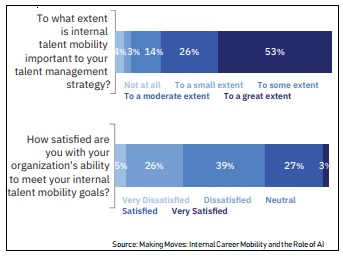There is a talent shortage. I know, this isn’t a shock to you. You feel it in your business on a daily basis. Trying to fix it, you get creative in your hiring practices. Maybe you’re like Carol McDaniel, an HR executive at John Hopkins All Children’s Hospital in Florida who turned to geofencing to attract highly specialized talent, like pediatricians or neonatal nurse practitioners. Creative yes, but with new laws like GDPR, this tactic may pose privacy concerns.
If you think you’re alone, you’re not. There’s a global talent crisis. According to Thomas Lee, head of research at Fundstrat Global Advisors, the impact on the U.S. is a matter of economy, and it’s not slowing down. The problem is, there simply aren’t enough workers to meet production demand for goods and services. Lee projects the nation will face a potential shortfall of 8.2 million workers through 2027.
This is a huge issue, and I believe it will require an even bigger response. If we’re going to tackle the skills shortage, we need a “career revolution.”
Internal mobility
That begins by looking within. Take a serious look at how you can activate mobility within your organization. Internal mobility has the power to fill critical roles and skills gaps while helping employees gain new skills, transition into new roles, and create career paths.
Now, making internal mobility a priority doesn’t come without challenges. A 2017 IBM Smarter Workforce Institute study, Should I Stay or Should I Go?, shows that 62% of employees reported they are tempted to take a new job. Though less than a quarter of those employees are actively looking for employment, a staggering 76% said they would immediately jump ship for the right opportunity.
Have you examined your employee experience lately? Companies that examine their employee experience on a frequent basis can use what they learn to make changes. Fixing what’s broken can lead to improved job satisfaction and help maintain a competitive advantage.
In the war for talent, you must start with two key things when it comes to creating an experience that will make employees want to stay:
- Map employee assessments and skills inventories to career aspirations and development opportunities.
- Give employees chances to use existing skills and design a path for them to gain new skills in the short, mid-, and long term.
Hiring internally can also save the business money. The financial impact of an internal hire is less costly than that of an external hire in the first two years. Research from Wharton management professor Matthew Bidwell shows internal hires even perform better. Why overlook these candidates when you can meet their needs and the needs of your organization?
Apprehension and misperception are among the top five reasons challenges exist when trying to activate career mobility in an organization. First, managers are unwilling to put people forward for new opportunities 59% of the time. Second, there is a misperception that external candidates are better.
4 tips to becoming a career revolutionary
Truly transforming how HR is delivered will require your organization to become more human centered, leverage digital tools to your advantage, and personalize the employee career journey. Most businesses aren’t positioned for transformation.
According to a survey on internal career mobility and the role of AI, 79% of HR practitioners recognize the importance of internal career mobility. Yet, only 30% of HR professionals are satisfied with their ability to meet internal mobility goals.
If this is you, here are four tips to be a career revolutionary within your company:
- Recognize the importance of the employee experience.
- Bridge the gap with internal career mobility.
- Develop a career program for all of your employees.
- Select the right talent management technology to support your internal processes and create a seamless experience from the time of hire.
